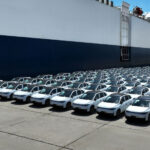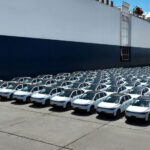EU moves from higher tariffs to minimum acceptable price level for import of Chinese electric cars
Increased duties on Chinese electric cars, which came into effect in the European Union following an antitrust investigation, increase the cost of some brands of cars when imported into the…
EU moves from higher tariffs to minimum acceptable price level for import of Chinese electric cars
Increased duties on Chinese electric cars, which came into effect in the European Union following an antitrust investigation, increase the cost of some brands of cars when imported into the…
Every fifth iPhone is now made in India
Not so long ago, every seventh iPhone was manufactured in India, which in itself was an achievement for Apple’s relatively “young” production site, but according to the results of the…
The First Berserker: Khazan – Cheap, but Good and Cheerful. Review
Played on Xbox Series X Although Dungeon Fighter Online has a billion players, you probably haven’t even heard of it – the 2D action game is very popular only in…
The First Berserker: Khazan – Cheap, but Good and Cheerful. Review
Played on Xbox Series X Although Dungeon Fighter Online has a billion players, you probably haven’t even heard of it – the 2D action game is very popular only in…
Three months to Mars: British invent space tug with thermonuclear propulsion
British startup Pulsar Fusion has unveiled the concept of the Sunbird space tug powered by fusion. A small rocket powered by a direct fusion linear drive will be able to…
Three months to Mars: British invent space tug with thermonuclear propulsion
British startup Pulsar Fusion has unveiled the concept of the Sunbird space tug powered by fusion. A small rocket powered by a direct fusion linear drive will be able to…
Telegram now offers group calls for 100 people with end-to-end encryption — in test mode for now
The beta version of Telegram for Android (11.9.1) has a group calling feature that allows up to 100 users to communicate simultaneously in one group. This was reported by the…
Newly awakened black hole reveals ‘wild’ appetite that stuns scientists
A supermassive black hole in the galaxy SDSS1335+0728, located 300 million light years from Earth, has recently been under continuous observation by scientists. This object became the first black hole…
Price hikes for iPhones, video cards and other electronics are cancelled – Trump exempts them from increased duties
The tech industry may be breathing a sigh of relief after the White House lifted higher tariffs on smartphones, laptops, PC components and other electronics imported into the United States.…






